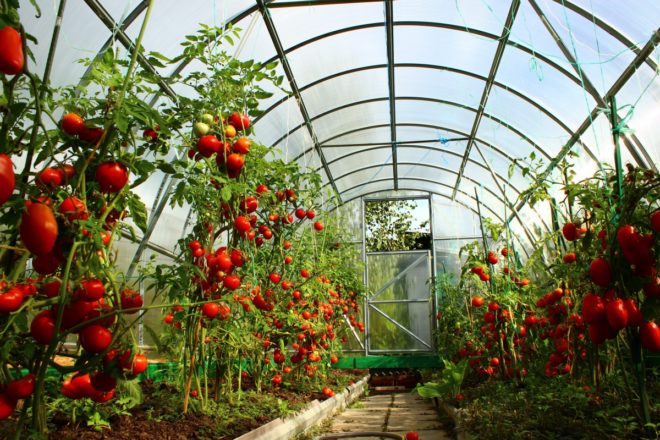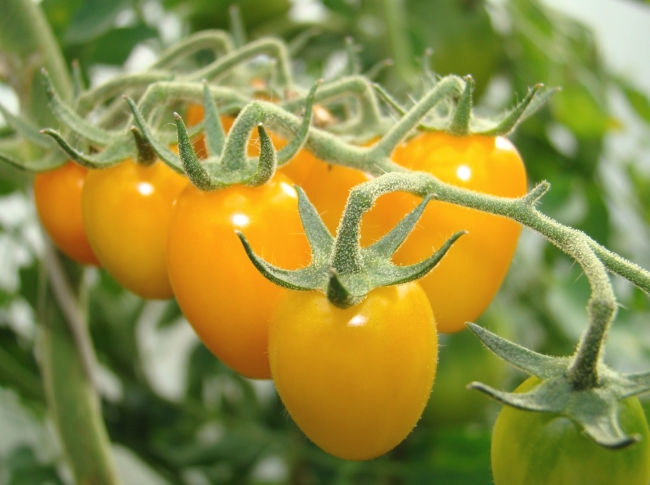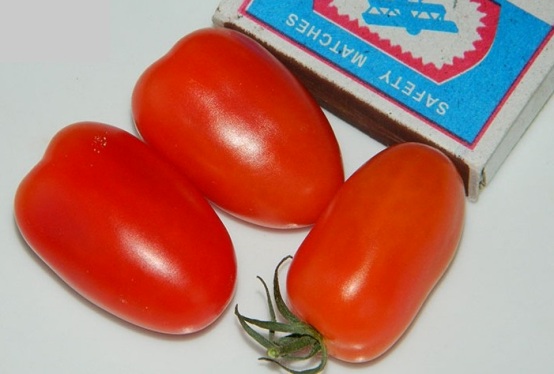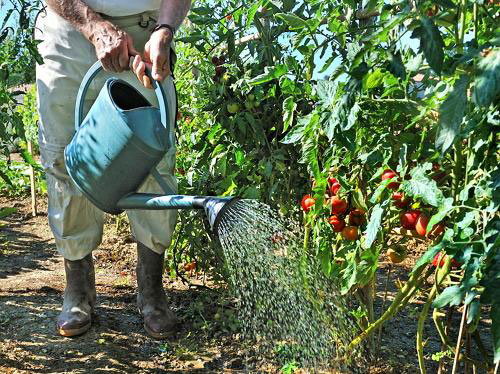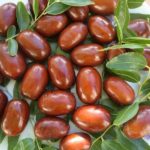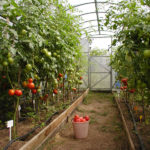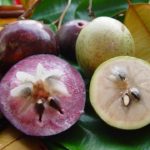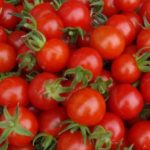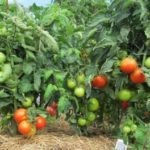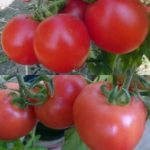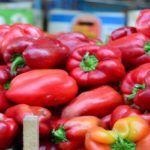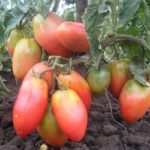Date tomatoes are bred by crossing cherry tomatoes. There are several different types: Yellow date F1, Orange date F1, Siberian date F1.
Hybrid Date red F1, variety description: medium late, classified as semi-determinate. This means that the main stem stops growing after 8 to 12 inflorescences have formed. The first inflorescence grows on the main stem above the 7th – 9th leaf.Such plants have short internodes, that is, the distance between the racemes is 12–18 cm, whereas in indeterminate varieties it is 25–30 cm.
The bushes are up to 1.5 m in height, but they can also grow more compact, up to 90 cm. The bushes are moderately leafy, with 6–8 fruits ripening in a cluster.
The variety has a long fruiting period, the fruits are harvested from July until the end of September. The tomato is intended for planting in a greenhouse; in the southern regions it can be planted under film.
The fruits are shaped like elongated ovals and have a pointed tip. Fully ripe tomatoes are scarlet. The skin is dense and does not crack, which makes them easy to transport and the tomatoes are perfectly stored. The weight of a medium-sized fruit is up to 20 g. The fruit is sweet in taste and has a delicate aroma. Tomatoes are put in salads, canned, dried, used in diets and in baby food.
Pros and cons
Advantages of this hybrid:
- excellent productivity;
- the fruits are very sweet and tasty;
- the variety is frost-resistant;
- transportable;
- tomatoes last for about 2 months and do not lose their excellent taste;
- has immunity to diseases;
- easy to care for;
- Quite a long season for tomato harvesting.
Small disadvantages:
- tomatoes ripen quite late - they begin to be harvested on July 25;
- if the weather is cool, then the number of ovaries formed decreases sharply.
Planting seeds
The boxes are filled with sand, peat, garden soil with the addition of superphosphate, potassium and ash. If you prepared the mixture yourself, then fry it for an hour in the oven at 200 °C to eliminate pathogenic fungi and bacteria.
Seeds are sown in boxes in early March. First, put it in a gauze bag and lower it for 20 minutes. into a solution of 1 teaspoon of potassium permanganate and 1 liter of clean water. Seeds are planted in the soil to a depth of 1 cm.
Water the plantings with a spray bottle and cover with film. Before the first shoots, it is necessary to place the boxes in a room with an air temperature of about +23 °C. When sprouts appear, remove the film.
When 1 - 2 true leaves grow, plant the seedlings in separate peat cups. Be sure to extend their daylight hours by illuminating the tomatoes with lamps.
Fertilize for the first time 10 days after emergence. Pour 100 g of bird droppings or 300 g of manure into a ten-liter bucket of water. Leave it for a day. After a day, water the seedlings at the roots, being careful not to get them on the leaves, as this can cause burns.
60 - 65 days after sowing the seeds, growing seedlings continues in open ground or in a greenhouse.
Planting seedlings in the ground
Prepare the soil in the fall. For 1 m² of clay or loam, scatter 3 buckets of soil mixed from equal parts of peat, humus and sawdust. If you have peat, then per 1 m² pour 3 buckets of a composition of 2 parts humus, 2 parts turf, 2 parts sawdust and 1 part sand, a teaspoon of double superphosphate and 2 tbsp. spoons of ash. Dig up the soil, pulling out weeds and digging up roots.
At the end of May or at the beginning of June, plant the seedlings in a permanent place. Dig holes so that when planting seedlings, place 3 plants per 1 m². Pour hot water into the holes, then drive in the stakes, then place the seedlings and cover with soil. Next, tie up the bushes. Seedlings need an air temperature of +20 - 22 °C during the day, and at night - not lower than 18 °C.
The variety loves moisture, water it with warm, settled water in the evening. Watering is especially important before the buds open, during flowering and fruiting. Loosen the soil after watering very carefully so as not to damage the root system.
Water at least 2 times every 14 days, adding diluted mullein or bird droppings to the water. Instead of organic matter, you can add complex mineral fertilizers.
After the ovaries form, stop feeding with nitrogen. Throw up the bushes. You can leave 1 - 2 stepsons from the bottom of the bush, ovaries will appear on them. Start collecting fruits on July 15, when the tomatoes become technically ripe, since tomatoes ripen easily during storage.
Pests and diseases
Maintain crop rotation; in open ground, plant seedlings in a new place every 2 to 3 years. Plant tomatoes in an area where lettuce, parsley, mustard greens, and beans grew.
The tomato is resistant to major diseases, but for prevention it is recommended to change the top layer of soil in the greenhouse 10 cm thick every year. Spray the remaining soil with a solution of copper sulfate. To prevent pest attacks, mulch the ground under the bushes with peat and straw. After watering, carefully loosen the soil. Spray the plants with warm water. Ventilate the greenhouse every day. If you do find pests, it is better to spray the tomatoes with safe biological products.
Date varieties and reviews
Reviews about the Red Date tomato are extremely positive. Here’s what Tatiana from the Moscow region writes about tomatoes: “I bought seeds from the Russian Garden company. I plant this variety every year. The fruits are small, sweet, last a long time due to the excellent separation from the stalk and the high density of the skin; the dessert taste remains during storage.”
The Orange Date tomato variety has been developed, the fruits of which are orange in color. The shape of the tomatoes is similar to the Red Date variety, oval-oblong with a sharp tip.
There is also a tomato variety Date yellow F1, which can be planted at home on the windowsill. The fruits are lemon-colored.The taste of yellow Date tomatoes is slightly less sweet than that of Red Date tomatoes. But the pulp tastes like raisins, ripened plums and a honey aftertaste.
Tomato Date Siberian F1 differs from other varieties in that its fruits ripen 10 days earlier. Characteristics of tomatoes: contains about 10% sugars. These tomatoes can be planted in pots where the height of the bush reaches 50 cm. They are planted in Siberia in greenhouses. Planting seeds, transplanting seedlings and caring for bushes are identical for these varieties of tomatoes.
Small-sized tomatoes of the Date variety are very popular with children, who love them for their sweet dessert taste and similarity to date fruits. Tomatoes of the Date variety are easy and simple to care for.

